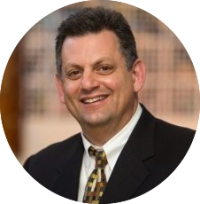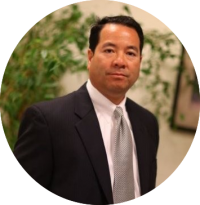We are at the beginning of a new generation of real-time applications, built on VANTIQ’s EDA architecture, that will help the public and private sector drive huge improvements in how we manage our environments – work environments, campus environments, even our natural environments. Governments at every level represent a big part of the massive opportunity for real-time applications.
In this part one of a two-part series, we chat with Paul Benedetto and Kevin Matsuo to share their perspectives on the challenges of working for – and with – the public sector in advancing technology initiatives. We also talk about their thoughts on opportunities to help government with “smart cities” and related programs. Answers have been edited for brevity and clarity.
Featured Guests
 |
Paul Benedetto
Paul has held several senior administrative roles with the State of California, including Undersecretary of Operations for the California Technology Agency. |
 |
Kevin Matsuo
Kevin has held several senior technologist positions, including former CIO at the California Department of Education. |
Q: Hi gentleman, thanks for joining us. You’ve both seen a lot in your careers with the State of California, and you worked together at times throughout those careers. But you come from different backgrounds and held different roles. Can you talk a bit about how you approached your positions in terms of implementing tech? And what the VANTIQ community should bear in mind when it comes to doing business with the public sector?
Kevin: I started off my career in public service working as a computer operator for the Department of Justice. Eventually, I moved into software development and then was fortunate to get promoted into management fairly early in my career. That developed into a CIO job with the California Youth Authority and I went on from there.
Paul: I was not a technology person. I was more of an administrator. I had numerous State jobs in numerous State Departments. It provided me with an opportunity to see the state a little differently. I had a procurement job where I ran the California computer store, was a testing manager, a customer service manager, an admin deputy, and eventually becoming the Director for the Office of System Integration which runs some of the biggest IT projects in the world, barring federal government projects. We were operating a $6B portfolio of IT initiatives. My last civil service job was as the Undersecretary for the California Technology Agency. I was very lucky in my career.
Kevin: I would go to guys like Paul and say hey, here’s a project that we need to do. I need some money for, say, cybersecurity, and here’s the reason why we need to do it.
Paul: And I’d say, “What are you guys thinking? It’s the programs that are more important! This sounds like a waste of time and money.” And Kevin would explain, this is our goal, this is how we help achieve it. So he’d explain to me why we’d need to do it. And he’d be right!
Q: Talk a little about that tension between the program goals and the debates that go on about cost and value. What can VANTIQ’s community of technologists take away from that?
Kevin: Sure. You know I’d have those conversations with the directors, and Paul’s right, a lot of times those Directors would say, you just want money. But in addition to my CIO hat, I was really conscious about wearing my taxpayer hat, too. So I’d ask my manufacturers and vendors, sharpen your pencil. I was after the best value. There’s a balance in trying to get quality as well as low cost. So, your community should know there are CIOs in the public sector who aren’t just about cost. You need to seek those people out.
Paul: I have a much different perspective, I didn’t care what something cost. Once we decided to go forward, I wanted to make sure the stuff worked. There were too many instances we would get a low bid by a vendor that didn’t know what the heck they were doing. And again, we’re running multi-billion dollar projects. I wanted them to work. I fought like hell with procurement to make sure my projects were judged more on value than on pure cost.
Q: So it sounds like a few lessons – find the people who want value and results, not just the lowest cost; and don’t underbid.
Paul: Exactly. There were some systems integrators and vendors at times, they came in cheap and they did a poor job. I had no problem giving my Directors, Deputy Directors, and CIOs as much money as they wanted as long as the results were for my clients, or our internal customers, or the 40 million Californians that might be using any given system we supported. That was what was important to me.
Q: Kevin and Paul, you’re familiar with VANTIQ, many of our partners, and the potential for this new generation of real-time apps to help the public sector in so many ways. How do you think of that? Smart cities, or smart schools and campuses, or smart prisons, or smart ‘fill-in-the-blank.” How should our community think about getting a handle on this?
Kevin: When we talk about IoT, that’s why I like VANTIQ. Being able to take the data and not just let it sit there. Let’s do something valuable with the information so we can make informed decisions. That’s why I like the technology. Now if we can do that for all the IoT devices and all of those things that make a city smart or a school smart, we can make a big difference. I think there needs to be a commitment from every level, down to county and city level elected officials. But I really do see Smart Cities being more than just, “Hey, we’ve got a WIFI network, and you can get free internet.” We could use a lot of that information that we collect over the networks, and the applications could be developed to deal with air quality and traffic congestion and so many other things. Just by taking the data and analyzing that data, and then acting on it.
Paul: I don’t think there’s one place to focus. I think it depends on the city. As I started understanding these concepts, we started having different conversations with San Francisco, with Fresno, with San Jose, with LA. And what I learned very quickly was each of the cities has a different need for different types of technology.
Look at homelessness, a huge issue for any of the larger cities. Real-time information on homelessness, where they’re located on the streets, are they infected with the coronavirus, are they up on their shots. So homelessness is rampant – and there’s real budget attached to the problem. But LA might have something with water, or San Francisco something with how they want to manage their traffic patterns differently. You have to look locally, but there’s no question it’s a real opportunity to change how our cities look and operate.
Q: Thanks Paul and Kevin. We look forward to talking to you more in part two about the potential for real-time applications to address public health and safety issues related to COVID-19. Any parting advice for our community in terms of engaging with the public sector?
Paul: The most important thing is relationships. You’ve got to be able to sit down and talk to whoever you need to talk to one-on-one, and have that relationship so they know they can trust you, that you’re going to provide them with technology that’s going to help them solve a problem, help a stakeholder, make them and the program successful.
Read Part 2 of Paul and Kevin’s interview here.